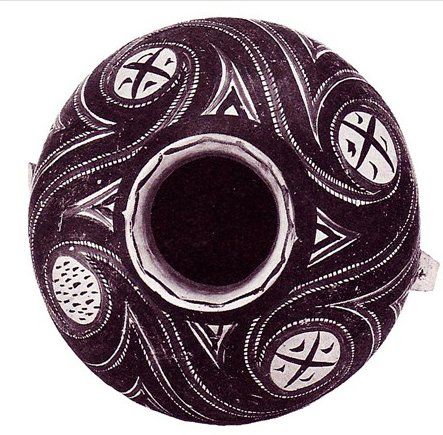Chinese calligraphy
The origin of Chinese writing is debatable and scientists cannot pinpoint an exact point in time. However, we could say with a fair amount of certainty that it all began at the very moment when a human being decided to put his thoughts into the form of a symbolic drawing or abstract design, linked to an idea, feeling or a moving experience. In 1988, a few thousand rather mysterious zoomorphic characters, carved into the rocky cliffs of Beishan Mountain, were discovered in the area of Damaidi 大麥地, Zhongwei 中衛, a prefecture-level city in China. The oldest of them was created twenty to thirty thousand years ago, while the most recent was around six to seven thousand years ago, i.e. during the New Stone Age.
They mainly depict images of animals such as tigers, dogs, horses and sheep, and also scenes from everyday life such as weddings or other ceremonies and events. The birthplace of Chinese characters is still a mystery, though one thing is certain, that the Damaidi drawings are the oldest creations of human imagination and thought, in artistic form. Far Eastern calligraphy is based on the concept of abstract images and visions of the world around us, and it would perhaps not be wrong to say that the Damaidi rock carvings are the seed of the modern Shodo art aesthetic. The next major step in the history of the Chinese art of writing was made in 1921, when a Swedish archaeologist, Johan Gunnar Anderson discovered a piece of decorated pottery near the village of Yangshao 仰韶, Henan Province. The Yangshao culture spanned about 2,000 years, starting around 5,000 BC. This interval is quite unusual for the time of the New Stone Age. The pottery found was decorated with black, white and red spots. Some experts have managed to link it to the modern Chinese language, however, the debate continues. Even if we dismiss the Damaidi drawings as a far-fetched theory about the origin of Chinese typographic writing, the Yangshao markings have enough potential to be classified as an origin. Consequently, this would mean that the history of Chinese calligraphy is at least 7,000 years old, 1,500 years older than the oldest written language on Earth, the Sumerian (ancient Mesopotamia) cuneiform script, which dates back to 3,500 BC.
One thing is certain, that most of the clay was created in the territories along the Yellow River throughout the New Stone Age, during China's first dynasty, the Xia Dynasty 夏朝 (2070 BC to 1600 BC), and up to the beginning of the Shang Dynasty 商朝 (1600 BC to 1046 BC). From the 16th century onwards, calligraphy began to develop rapidly. Different styles came into being, starting with seal script and scribe script, and then cursive, standard and semi-cursive scripts respectively. Chinese calligraphy reached its full maturity, and this is when all the styles were already in use. The Chinese writing system began to reach other countries, for example Japan, which continued to evolve in slightly different cultural and linguistic circumstances. As a result, the development of new "territorial" styles took place, such as Japanese Kana, also known as Onnade 女手 (lit. "woman's hand").
Due to the great importance and emphasis each country places on the growth of Far Eastern calligraphic art, the characteristics of particular styles from certain areas or time periods will be treated separately. This will provide a detailed perspective and contribute to a better understanding and appreciation of this remarkable art form.
The question one may ask at this point is why such a complex writing system still persists, and why it has not been simplified. The answer lies in culture. The values of the Western world give importance to what is scientifically or logically explainable, what is tangible or definable. The East has a contrary approach to life, deeply rooted in the appreciation of nature, belief in cosmic forces, supernatural magic, and all that is rationally inexplicable. All theories of calligraphy are based on nature. Many masters were inspired by the simple sounds of a stream, the falling of rocks, or the movements of a skilled dancer. This is why the art of Shodo is so elusive, making it impossible to catalogue or classify. Calligraphy was created long before it appeared on paper, at the center of the Universe itself.
* Text and photos provided by Ponte Ryuurui to Shodo Creativo. Translated from English to Spanish by Elena Hikari.




